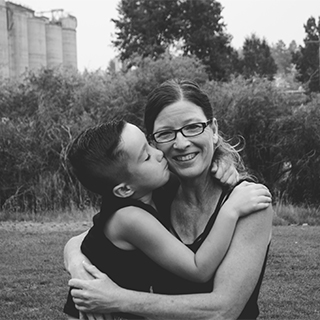My Perspective: I Run My Own IEP; You Can Too!

By Heath Montgomery:
Heath Montgomery is a 7th grader in Missoula, Montana, and has been active in local and national disability advocacy since 2017. He is currently focused on the SSI Restoration Act which would eliminate the marriage penalty for people with disabilities. Please contact him at bigskyheath@gmail.com for more information.
The IEP. The once-a-year event that… does what exactly? The Individual Education Plan (IEP)* might sound boring and bureaucratic, but it is an important document that lays out your needs and what supports your school is legally required to provide. It is also a time to have a good conversation with your team, build rapport, express appreciation, brainstorm ideas, and more. This conversation you get to have with your teachers, school therapists, and parents is priceless and may be just as important as what ends up in the actual document if it builds respect for you as a self-advocate.
I know you're probably thinking, “Why is this kid talking about the dumbest, most boring thing in the world?” Because IEPs are the one time of the year your whole school team gets together because of YOU. And you can run the show if you plan ahead. This disabled adolescent is going to teach you how!
First, let the resource professional in charge of your grade know that you want to run the IEP meeting yourself. I used the classic disability rights motto, “Nothing about me without me,” to explain why running my own IEP was important to me.
Before your IEP meeting, it’s useful to jot down everything you want to say in an informal document and send it to your team so they know what you expect to discuss. Here is a handy template:
What is going well for me
My strengths (If you're too humble, like me, have a family member or friend help fill this section out)
What I would like to see improve/change
What I would like more support with
My long-term goals and what I need from the school to achieve those goals
My short-term goals until my next IEP and what I need from school to achieve those goals
If you have a beef with a member of your team, try to talk with them about it prior to the IEP. If it comes out at the IEP instead, they might be resentful or hurt and you’ll likely have to see them for years to come. Awkward! Trust me: you don't want to burn any bridges. At least, not yet. If the team member is really bugging you, you can call them up or talk to them at school to communicate your frustration. Remember, this whole thing is about YOU and how you want to be treated so you can thrive.
The day before the IEP, practice what you want to say, possibly in the mirror or in front of friends or family.
Pick out an outfit that represents who you are and will inspire the team to respect you. Take a bath and comb your hair.
When you arrive at the IEP meeting, take a seat near the front of the room. I had my resource professional project my IEP document on a large screen, which we had worked on together over previous weeks. If your voice is soft, use a microphone. If you have stage fright or a speech impediment, you could ask a friend or family member to help translate what you wish to say.
Be sure to watch the time. Don't get sidetracked on a time-consuming rant. Although, who am I to say? In my house, I'm famous for that! The point is: learn from my mistakes. Keep your points brief, but take time to get your ideas across. If it helps, feel free to bring a stopwatch. Think of it as playing an instrument, like the drums: maintain a quick and steady pace.
If you practice some of these tips and your team is supportive, you should do fine. If your team needs some nudging to accept the idea of you leading your own IEP, contact a local advocacy organization or regional Center for Independent Living (CIL)** for suggestions or backup in the meeting itself. You can invite anyone you want to the table! Remember, the IEP is about YOU.
Let me leave you with a quote from graphic novelist, Jessica Abel: “We're going out on the wire.” That means you have to take a risk in order to do something great. So come on, get out on that wire at your next IEP!
*Students attending public school who receive special education and/or related services have a document called an Individualized Education Program (or Plan) (IEP). These documents should be written collaboratively with student and family input, as well as the input of teachers and others on the education team (therapists, para-educators, school administrators, etc.). The IEP is a personalized document addressing a student’s unique challenges and strengths.
**There are four Centers for Independent Living in Montana. These Centers help Montanans with disabilities self-advocate and get access to services they need to live as independently as possible. Find your region’s CIL here: dphhs.mt.gov/detd/independentliving/CenterLocations
Disclaimer:
This publication was developed under Grant H84MC32752 from the Health Resources and Services Administration (HRSA), Family to Family Health Information Center, $96,750. Views and opinions expressed in this article are the author’s and do not necessarily reflect the official policy or position of the Montana Family to Family Health Information Center, the Rural Institute for Inclusive Communities, the University of Montana, or HRSA.

